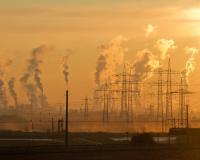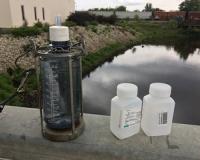
Vibrant Environment
All
All | Biodiversity | Climate Change and Sustainability | Environmental Justice | Governance and Rule of Law | Land Use and Natural Resources | Oceans and Coasts | Pollution Control

Numerous studies have shown that Black and Latinx communities in the United States face higher hospitalization and mortality rates from COVID-19 and are disproportionately harmed by the virus. While many cite comorbidities and underlying health issues as the reasons for this disparity, the root of this problem is systemic racism. Recent research has found that social determinants like access to healthcare, employment, and clean air and water are the true inequities that have made COVID-19 deadliest for communities of color.

Electricity generation, one of the leading sources of greenhouse gas emissions, rarely accounts for the social cost of damages caused by carbon dioxide emissions. Embedding these costs into market rates is one way to address the pressing need for decarbonization. In this year’s Environmental Law and Policy Annual Review (ELPAR), a special issue of The Environmental Law Reporter, authors Bethany Davis Noll and Burcin Unel argue that addressing the price of emissions falls within the authority of the Federal Energy Regulatory Commission (FERC). The authors examine how imposing a cost on carbon aligns with FERC’s main goal of ensuring just and reasonable rates, and they explore opportunities and limits for FERC’s authority.

Electricity generation, one of the leading sources of greenhouse gas emissions, rarely accounts for the social cost of damages caused by carbon dioxide emissions. Embedding these costs into market rates is one way to address the pressing need for decarbonization. In this year’s Environmental Law and Policy Annual Review (ELPAR), a special issue of The Environmental Law Reporter, authors Bethany Davis Noll and Burcin Unel argue that addressing the price of emissions falls within the authority of the Federal Energy Regulatory Commission (FERC). The authors examine how imposing a cost on carbon aligns with FERC’s main goal of ensuring just and reasonable rates, and they explore opportunities and limits for FERC’s authority.

Though the remediation of Superfund and brownfield sites protects the environment by removing harmful contaminants, the cleanup process itself can produce a significant environmental footprint. Remediation often involves technologies and heavy-duty construction equipment that is powered by fossil fuels and emits air pollution. How can we reduce the environmental footprint of the remediation process at these contaminated sites?

In Part One of this blog, I discussed the negative impacts of per- and polyfluoroalkyl substances (PFAS) and the lack of regulation in the United States as compared to the European Union (EU). This second part proposes three policy options for the U.S. government to consider: (1) regulating the production of PFAS; (2) limiting the ingestion of PFAS through drinking water; and (3) providing funding for federal cleanup of PFAS-contaminated sites.

We have the solutions we need to build an equitable and just climate resilient future. Over the past year, coalitions of frontline environmental groups, labor organizations, tribal groups, and other mission-driven organizations in the United States have developed and published comprehensive policy platforms to address the climate crisis. These platforms outline federal, local, and state policy for building resilience and transitioning to renewable and regenerative economies.

We have the solutions we need to build an equitable and just climate resilient future. Over the past year, coalitions of frontline environmental groups, labor organizations, tribal groups, and other mission-driven organizations in the United States have developed and published comprehensive policy platforms to address the climate crisis. These platforms outline federal, local, and state policy for building resilience and transitioning to renewable and regenerative economies.

In recent years, scholars, journalists, and activists have drawn attention to the sexist, racist, classist, and homophobic attitudes that surround the U.S. environmental movement. Though the movement’s problematic aspects may come as a surprise to some, the exclusionary nature of mainstream contemporary environmentalism is no accident. The crusade to address the nation’s environmental issues was designed this way from the outset.

In recent years, scholars, journalists, and activists have drawn attention to the sexist, racist, classist, and homophobic attitudes that surround the U.S. environmental movement. Though the movement’s problematic aspects may come as a surprise to some, the exclusionary nature of mainstream contemporary environmentalism is no accident. The crusade to address the nation’s environmental issues was designed this way from the outset.

Whether or not you follow chemical regulations, you’ve probably heard of PFAS, per- and polyfluoroalkyl substances, a class of over 4,700 synthetic compounds. While many have discussed the risks of PFAS for human health, regulation is lacking in the United States to limit its use. So, what are the risks posed by PFAS and what policy measures might prove effective in mitigating their potential harm? This two-part blog will explore the answers to these questions.